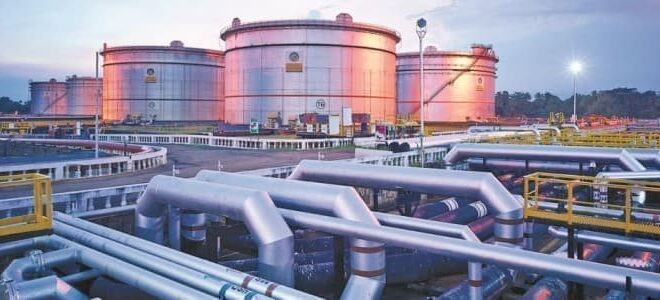India, the world’s fourth largest crude oil refiner, is expected to add one million barrels per day (mb/d) of refining capacity in the next five years.
According to the latest refining capacity numbers by the International Energy Agency (IEA), India will increase its refining capacity from 5.2 mb/d in 2022 to 6.2 mb/d in 2028.
As per the Petroleum Planning and Analysis Cell (PPAC), India’s cumulative crude oil processing stood at 4.85 mb/d in FY22, which rose to 5.02 mb/d in FY23. During the first two months of FY24, the crude processing stood at 5.31 mb/d.
India refinery expansions
“Over the medium term, regional growth is underpinned by Indian additions that total one mb/d. The new capacity comes mostly from expansions at existing sites, with only the 180,000 b/d Barmer greenfield project coming online,” IEA said.
The fate of the planned 1.2 mb/d Ratnagiri refinery remains unclear. Land acquisition constraints are the latest roadblock to the project that was first proposed in the middle of the last decade. Even if finally approved, the refinery is not expected to come online in IEA’s forecast period (2022-2028), it added.
According to Motilal Oswal Financial Services, Indian Oil Corporation’s (IOC) refinery projects are currently underway. The expansion of Panipat refinery to 25 MTPA is expected to be completed by September 2024. The expansion of Gujarat refinery to 18 MTPA and Baruni refinery to nine MTPA are expected to be completed in 2023.
Bharat Petroleum Corporation (BPCL) is also ramping up the existing refinery capacity at Bina (Madhya Pradesh) from 7.8 MTPA to 11 MTPA. Similarly, Hindustan Petroleum Corporation (HPCL) has also undertaken expansion of its refineries at Bhatinda and Vizag as well as the greenfield refinery at Barmer, which are expected to be completed in FY24.
India & China lead
Globally, more than six mb/d of new crude distillation capacity is scheduled to be completed between 2022 to 2028. At the same time, 1.6 mb/d of capacity is slated to shut, leaving a 4.4 mb/d net increase. East of Suez dominates the outlook, though the Atlantic Basin will see modest increases early in our forecast.
Approximately 70 per cent of the six mb/d of new capacity is located East of Suez. China is expected to be the single largest contributor with India and the Middle East tied in second place.
In terms of net capacity additions, regions East of Suez make up the bulk of the increase, with 3.3 mb/d of net capacity growth. China leads the new builds, contributing 1.5 mb/d or 34 per cent to the net global additions through 2028.
The Middle East raises net capacity by 900,000 b/d, while Other Asia adds 1.1 mb/d over the same period. India also accounts for a significant share of the increase, with a net addition of one mb/d, of which 880,000 b/d are expansion projects.
Adapting to change
Transportation fuels have been the bedrock of product demand growth for the past 50 years, but a sea change in demand trends amid the energy transition diminishes their role in the future, IEA said.
As a result, peak transportation demand for oil products presents an existential challenge for less competitive refineries. Demand growth for transport fuels is forecast to turn negative before 2028, driven by gasoline, it added.

 Iran Energy News Oil, Gas, Petrochemical and Energy Field Specialized Channel
Iran Energy News Oil, Gas, Petrochemical and Energy Field Specialized Channel



